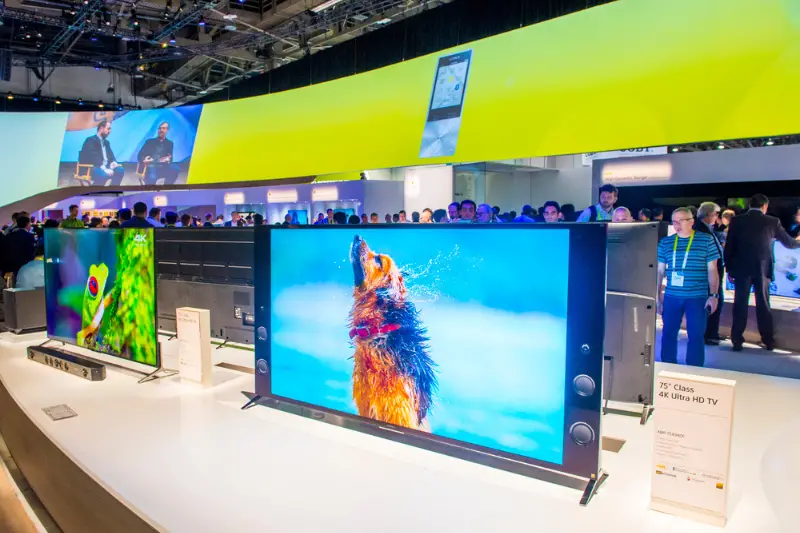Click here to get this post in PDF
Light-emitting diode (LED) screens have revolutionized how we view digital content. LED technology has permeated various facets of our daily lives, from giant billboards to smartphone displays. This article delves into the basics of LED screens, their types, advantages, applications, and future trends.
What are LED Screens?
LED screens are display technologies that use light-emitting diodes to create images. These diodes emit light when an electric current passes through them. Unlike traditional LCD screens, which require a backlight, LED screens produce their own light, making them more energy-efficient and capable of producing brighter and more vibrant images.
Types of LED Screens
LED screens, commonly used in various applications for their bright and efficient display technology, come in several types, each with unique characteristics and suitable for different uses. Here are some of the main types:
1. Standard LED Screens: These are the basic models of LED displays widely used in advertising billboards, public information displays, and store signs. They offer good brightness and color reproduction.
2. SMD (Surface-Mount Device) LED Screens: SMD technology allows for smaller LEDs and closer pixel pitches, resulting in higher resolution screens. They are ideal for both indoor and outdoor use and are commonly found in sports arenas, concerts, and high-traffic commercial areas.
3. HD LED Screens: High-definition LED screens provide superior image quality with high pixel density, making them suitable for locations where viewers will be close to the screen, such as control rooms, broadcast studios, and conference halls.
4. Transparent LED Screens: These screens are designed to be semi-transparent, allowing for creative installations where visibility through the screen is desired. They are often used in storefronts, exhibitions, and architectural environments.
5. Flexible LED Screens: Made with a flexible LED material, these screens can be bent and curved to fit various unconventional shapes and surfaces. They are commonly used in creative advertising, stage design, and unique architectural installations.
6. Outdoor LED Screens: Specifically designed for outdoor use, these screens are built to withstand various weather conditions and offer high brightness to be visible even in direct sunlight. They are used in outdoor advertising, sports stadiums, and public information displays.
7. Indoor LED Screens: Tailored for indoor environments, these screens have lower brightness levels suitable for indoor lighting conditions and can offer higher resolution due to closer viewing distances. They are used in shopping malls, airports, and corporate buildings.
8. Interactive LED Screens: These incorporate touch screens or other interactive technologies, allowing users to interact directly with the content. They are increasingly popular in educational settings, interactive advertising, and public installations.
Each type of LED screen has its own set of advantages and is best suited for specific applications based on factors like viewing distance, ambient light conditions, desired resolution, and environmental factors.
Advantages of LED Screens
1. Energy Efficiency: LEDs consume less power compared to traditional light sources.
2. Brightness and Contrast: High brightness levels and superior contrast ratios enhance the viewing experience.
3. Durability: LEDs are robust and resistant to damage, ensuring longer lifespans.
4. Flexibility in Size and Shape: LED screens can be customized to various sizes and shapes, making them ideal for diverse applications.
Applications of LED Screens
1. Advertising: Used in digital billboards and signage for high-impact advertising.
2. Entertainment: In concert venues and sports stadiums for live video feeds and replays.
3. Consumer Electronics: In TVs, smartphones, and computer monitors for sharper and more vibrant displays.
4. Public Information: For displaying information in airports, train stations, and public squares.
Future Trends
1. Mini-LED and Micro-LED: These technologies promise smaller LEDs, resulting in screens with higher resolution and better color accuracy.
2. Flexible and Transparent Displays: Innovative uses in wearable technology and augmented reality applications.
3. Sustainable Manufacturing: Efforts to reduce the environmental impact of LED production.
4. Integration with AI and IoT: Enhancing user experience through smart, interconnected devices.
How to Choose LED Display Company
Choosing an LED display company involves several considerations to ensure you get the best product and service for your needs. Dicolor LED offers ffers high-quality LED display screens, depending on your specific needs and customized solutions, it able to tailor their products to suit your specific requirements.
Conclusion
LED screens represent a significant advancement in display technology. Their versatility, efficiency, and quality have made them a popular choice across various industries. As technology continues to evolve, LED screens are expected to become even more innovative, eco-friendly, and integrated into our daily lives.
You may also like:
Installation Tips for Durable and Efficient LED Wall Packs
Where to Find Cheap LED Billboard Truck
Image source: Depositphotos.com

